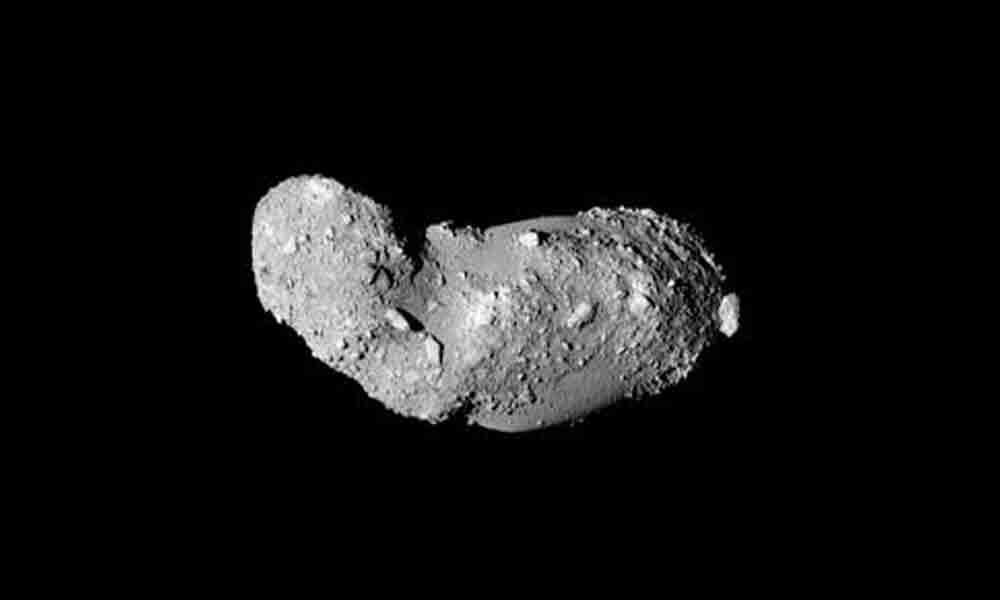Live
- With holiday mood on a high, hotel room demand peaks in Hampi
- Vajpayee’s statue unveiled in Berhampur
- Bengal school job case: Special court hearing today to monitor progress of framing charges
- CM, Naveen pay tributes to Vajpayee
- Freedom fighter, veteran CPI leader R. Nallakannu turns 100 today
- Pravati inaugurates Dandadhar tourism site
- Applications invited for PM housing scheme
- SOT police seize 14 kg Ganja at Chouttuppal RTC bus stand
- Delhiites unhappy with AAP, will vote for BJP: Manoj
- Majhi slams Cong over politicising Shah’s statement on Ambedkar
Just In
Water found in samples from asteroid Itokawa


Scientists, including one of Indian origin, have found water in the samples from the surface of asteroid Itokawa that were collected by the Japanese space probe Hayabusa.
Scientists, including one of Indian origin, have found water in the samples from the surface of asteroid Itokawa that were collected by the Japanese space probe Hayabusa.
The first-ever measurements of water contained in the samples from Itokawa suggest that impacts early in Earth's history by similar asteroids could have delivered as much as half of our planet's ocean water, said researchers from the Arizona State University (ASU) in the US. Itokawa is a peanut-shaped asteroid about 1,800 feet long and 700 to 1,000 feet wide. It circles the Sun every 18 months at an average distance of 1.3 times the Earth-Sun distance.
Part of Itokawa's path brings it inside Earth's orbit and at farthest, it sweeps out a little beyond that of Mars. "We found the samples we examined were enriched in water compared to the average for inner solar system objects," said Ziliang Jin, a postdoctoral scholar in ASU's School of Earth and Space Exploration. The team's idea of looking for water in the Itokawa samples came as a surprise for the Hayabusa project.
"Until we proposed it, no one thought to look for water," said Maitrayee Bose, an assistant professor at ASU. "I'm happy to report that our hunch paid off," said Bose, co-author on the researcher paper published in the journal Science Advances. In two of the five particles, the team identified the mineral pyroxene. In terrestrial samples, pyroxenes have water in their crystal structure. Bose and Jin suspected that the Itokawa particles might also have traces of water, but they wanted to know exactly how much.
Itokawa has had a rough history involving heating, multiple impacts, shocks, and fragmentation. These would raise the temperature of the minerals and drive off water, researchers said. To study the samples, each about half the thickness of a human hair, the team used ASU's Nanoscale Secondary Ion Mass Spectrometer (NanoSIMS), which can measure such tiny mineral grains with great sensitivity. The NanoSIMS measurements revealed the samples were unexpectedly rich in water.
They also suggest that even nominally dry asteroids such as Itokawa may in fact harbour more water than scientists have assumed. Based on Itokawa's spectrum in Earth-based telescopes, planetary scientists place it in the S class. "S-type asteroids are one of the most common objects in the asteroid belt," said Bose. She added that although they are small, these asteroids have kept whatever water and other volatile materials they formed with.

© 2024 Hyderabad Media House Limited/The Hans India. All rights reserved. Powered by hocalwire.com






